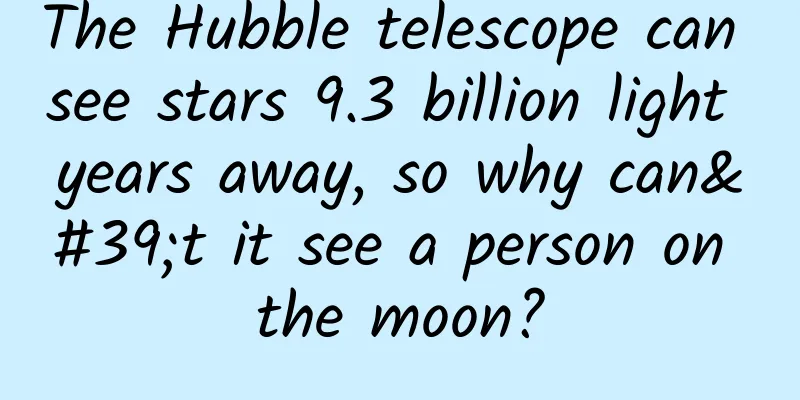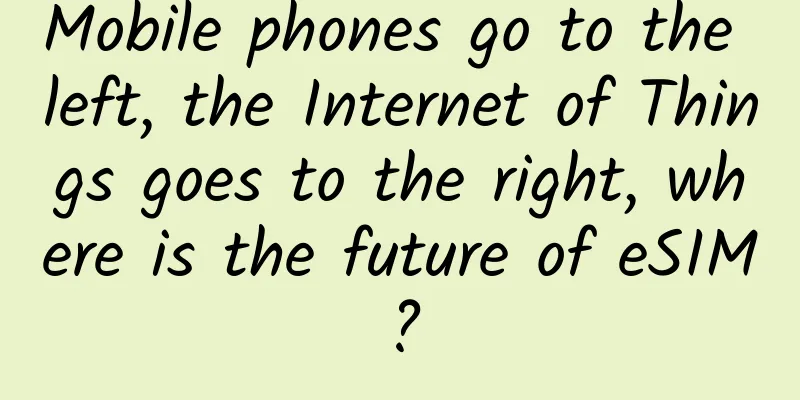The Hubble telescope can see stars 9.3 billion light years away, so why can't it see a person on the moon?

|
Someone asked, can a person on the moon be seen with a modern telescope? I said no, if a person on the moon could be seen, then the remains of the Apollo moon landing mission of the United States in the last century would be visible, and there would not be so many controversies about whether the American moon landing was true or false, or whether it was a conspiracy or an open conspiracy. So why can a telescope see a star 9.3 billion light years away, but not a person on the moon, which is so close? You should know that the moon is only 384,000 kilometers away from us on average, which is only 1/2.3 billion of 9.3 billion light years. If a 1.6-meter person is magnified 2.3 billion times, it will be 3.68 million kilometers away. Not to mention being able to see it, it would crush the earth. Even if the volume is increased, a normal person of 1.6 meters in height should have a BMI of about 60 kilograms. The human body density is about the same as that of water. The volume of 60 kilograms of water is 0.06 cubic meters, which increases by 2.3 billion times to 138 million cubic meters. According to the spherical volume formula, 138 million cubic meters is a sphere with a diameter of about 641 meters. A ball this big should be visible, right? In other words, since the Hubble telescope can see stars 9.3 billion light years away, it should be able to see a person on the moon. Why can't it see it? Let's discuss this together. First, let's talk about how the Hubble telescope saw the star 9.3 billion light years away. The Hubble telescope is the most powerful optical space telescope to date. Only it can see this star 9.3 billion light years away from us. In fact, the farthest celestial body that the Hubble telescope has seen is the GN-z11 galaxy 13.39 billion light years away from us. Since the galaxy is very large, we will not use it as an example today. In fact, the Hubble telescope saw this distant star not by direct observation, but by chance. This is a huge super blue giant, the farthest star ever seen by humans. The reason why it can be seen is that there is a huge galaxy cluster between the human line of sight and this star, which acts as a gravitational lens and magnifies the image of this star. The star is numbered MACS J1149 + 2223 Lensed Star 1. MACS J1149 + 2223 is the number of the giant galaxy cluster that acts as a gravitational lens; Lensed means that the star was discovered through gravitational lensing; and Star 1 means that this star is the first star discovered through gravitational lensing. Scientists nicknamed this star "Icarus". This is a tragic character in Greek mythology. Why it was named after such a tragic character is unknown. Friends who are interested can look up the information, so I won't explain it here. The so-called gravitational lens is a prediction of Einstein's general theory of relativity. Einstein believed that when light passes near a gravitational field, it will bend like passing through a lens, and the background celestial body will be imaged and magnified, allowing humans to observe celestial bodies farther away or behind the lens. This prediction has long been confirmed by astronomical observations and plays an important role in the study of dark matter, dark energy, large-scale gravity, and cosmic observations in astrophysics. In the universe, galaxies, galaxy clusters, and dark matter clusters with giant black holes may produce gravitational lensing effects. They are sandwiched between distant celestial bodies and human sight, causing the celestial bodies behind them to have a magnifying effect. The MACS J1149 + 2223 galaxy cluster is about 5 billion light-years away from us, just sandwiched between "Ikaros" and our sight. A normal gravitational lens can only magnify the image behind it 50 times, but this huge gravitational lens magnified "Icarus" 2,000 times! This is how scientists were able to see this star. Without this huge gravitational lens, the Hubble telescope would not be able to see this star. Calculated by zooming in 2,000 times, the star that Hubble sees is at a distance of 4.65 million years. If the gravitational lensing effect is excluded, even a space telescope like Hubble can only see single stars at this distance. This star emitted light 4.5 billion years after the Big Bang, 9.3 billion light years away from us. Due to the expansion of the universe, this star is now 28 billion light years away from us. According to the laws of stellar evolution, the life span of such a huge star will not exceed 10 million years, so it should have died long ago. What we see is not what it looks like now, but what it looked like 9.3 billion years ago. Even the best telescopes can only see stars as bright spots. Scientists cannot see the true appearance of most stars with telescopes, and can only see a bright spot. This includes the nearest star, Proxima Centauri, which is only 4.22 light years away. This is because the ratio of the size of stars to their distance is too large. Even with the best telescopes, the minimum resolution cannot be achieved when they reach our eyes. Only a few stars such as the Sun and Betelgeuse can be seen as a fuzzy circular surface, which is because these stars are too close or too large. The reason why Betelgeuse can be seen as a fuzzy circular surface is that its volume is more than 700 million times that of the Sun, its brightness is also very large, 90,000 to 150,000 times that of the Sun, and it is not too far away. Therefore, even with the largest telescope, we can't see the stars on their surface, but only the light they emit. Because the human eye is photosensitive, as long as a few photons reach the human retina, we can see the light, but we may not be able to see the appearance of the luminous object clearly. For example, a firefly is 100 meters away from us, and even in the daytime, it is invisible to the human eye; but at night, when it flashes, people can spot it from a long distance, but this does not mean that we can see the firefly clearly. The same is true for observing stars. We can only see the light emitted by the star, not the star's appearance. This is because the human eye must have a minimum resolution angle to see objects, that is, the object must reach the retina above the minimum resolution angle, otherwise it cannot be distinguished. The resolution angle of the human eye is generally 1' (1 arc minute) under normal brightness, that is, the angle reaching the retina must be at least 1' to distinguish the object. The telescope also has a minimum resolution angle, and its resolution should conform to the Rayleigh criterion formula: θ0 = 1.22λ/D, that is, the minimum resolution angle θ0 is equal to 1.22 multiplied by the wavelength of light λ divided by the aperture of the telescope D. In other words, the larger the aperture of the telescope, the higher the resolution and the farther it can see. The larger the aperture of an optical telescope, the larger the lens, which is more difficult to make, because the larger the lens, the more difficult it is to control deformation, so the minimum resolution of the telescope is limited. The diameter of the Hubble telescope's primary mirror is 2.4 meters, and the wavelength of visible light is between 380 and 760nm. We take an intermediate value of 570nm, which is 5.7*10^-7m. Substituting these data into the above formula, the minimum resolution of the Hubble telescope is about 2.9*10^-7rad (radians), 1 radian is about 206264.8 arc seconds, so the resolution of the Hubble telescope is about 0.059 arc seconds. So, how big an object on the moon can be resolved by the Hubble telescope? The average distance between the moon and the earth is 348,000 kilometers. Multiplying the minimum resolution of the Hubble telescope, 2.9*10^-7rad, by the distance of 384,000 kilometers, we get the smallest object that can be seen, which must be 111.36 meters in diameter or length. Therefore, even if a 1.6-meter person lies on the moon, the distance within the Hubble telescope is only 0.00085 arc seconds, which is impossible to resolve. Moreover, on the side of the moon facing the earth, a person standing there can only face the earth with his head and shoulders, which makes it even more impossible to see. So how big a telescope should be to be able to see a person lying on the moon? If observing light in the 570nm band, according to the formula, the main mirror diameter must be at least 167 meters. Humans currently do not have the ability to make such a huge optical lens without deformation. And those huge radio and ray telescopes, although with large apertures, can only observe radio or ray sources, not an ordinary person. I don't know if I have made myself clear. Welcome to discuss, thank you for reading. The copyright of Space-Time Communication is original. Infringement and plagiarism are unethical behavior. Please understand and cooperate. |
<<: 4 people died! A fire broke out late at night. What should you do if you are sleeping soundly?
>>: If "Children" is written on food packaging, does it mean it is safe and healthy?
Recommend
Does heading the ball in football really affect the brain?
Compiled by: Gong Zixin At a football game Pass, ...
From entry level to advanced level, the seven-step account creation process
From entry level to advanced level, a brief intro...
Every bite of hot takeout may be damaging your brain!
Have your parents ever advised you: Don’t eat tak...
Is there a sure-fire way to win at mahjong? Which game is more complicated: chess, go, mahjong, or Texas Hold'em?
Many children like board games, such as chess, go...
Can you see the bright spot in the middle of the picture? This bright spot is not simple!
As we all know, the Eiffel Tower is the most famo...
Musician Guitar Lesson Video Explanation Edition e-book (txt+pdf+mobi+equb+docx+azw3) Baidu Cloud Download
This book will proceed in a step-by-step manner, ...
Tencent Silicon Valley recruits to build an autonomous driving R&D team
According to foreign media reports, Tencent recen...
Talk about the 7 steps of event planning
I've heard such a little story. Xiao Zhang is...
[Smart Farmers] How to create a "home botanical garden" on the balcony?
Every family has a small balcony, a balcony of a ...
Xiaohongshu KOL distribution model and content marketing methodology
We provide you with a practical summary of brand ...
Are the sacrificial codes of the Shang Dynasty hidden under the stadium?
Text and photos by Liu Wenke 1. Discovery of the ...
When getting the new coronavirus vaccine, why do we have to alternate between the left and right arms?
Friends who have received the new coronavirus vac...
New progress! The world's longest undersea road tunnel begins its "sea journey"!
On January 26, the construction of the Qingdao Ji...
SEO money-making project case interview: The idea of 100,000 long-tail screen dominance will detonate traffic!
Opening remarks: The protagonist of this intervie...
After climbing the mountain, I had a high fever and a rash all over my body! We have treated many cases recently, so be careful of it when you go out!
Recently, the First Affiliated Hospital of Zhejia...









